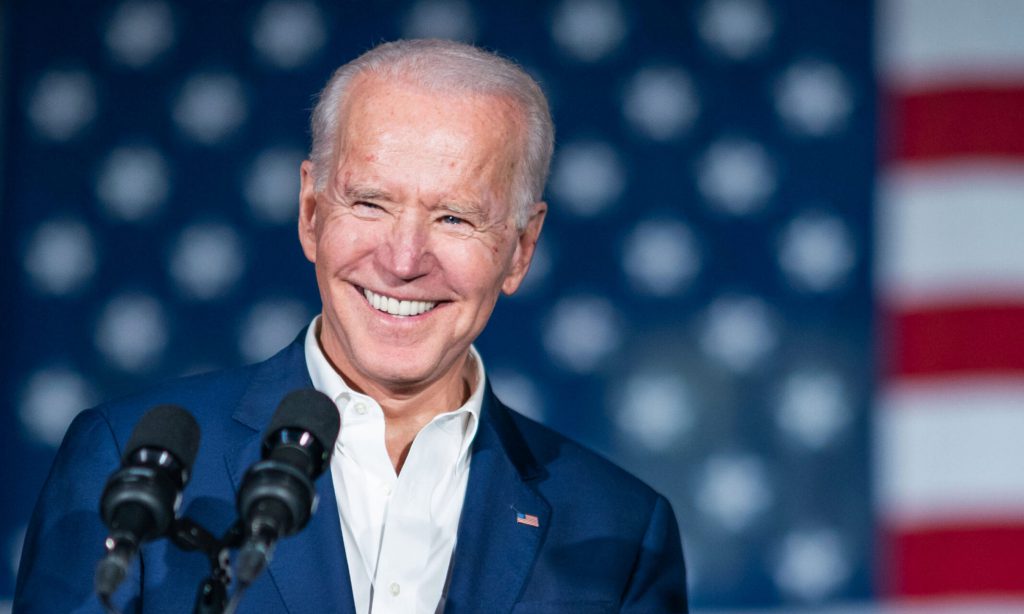Biden Plan Cites State’s Infrastructure Needs
Wisconsin has 198 bridges and 1,949 miles of highway needing repair, big gaps in broadband coverage.
Pennsylvania’s 7,540 miles of highway roads in poor condition. Florida’s $100 billion in damages over the last decade from extreme weather events. The 1 in 4 Idahoans with no access to broadband internet, and 1 in 2 living in areas with too-few licensed child care centers.
Wisconsin’s infrastructure received a C grade on its Infrastructure Report Card, up from failing grades in various infrastructure reports in the past. In Wisconsin there are 198 bridges and more than 1,949 miles of highway in poor condition. Sixteen extreme weather events over the past decade cost the state $10 billion.
In the next phase of President Joe Biden’s sales pitch for his $2 trillion infrastructure package, his administration is framing its argument around the mounting, unmet needs in states as it seeks to build public support for another massive spending bill. Democrats are also hitting back at criticisms from congressional Republicans that the mammoth package goes too far beyond the road-and-bridge projects typically associated with infrastructure.
The White House released a set of state-by-state breakdowns on Monday detailing the number of bridges in severe disrepair, increased commuting times due to lack of investment in transit, and growing costs related to ensuring that drinking water systems are safe and clean, as well as funding in the proposal intended to tackle those problems.
The White House press release points to Wisconsin’s bridges and highways that are in poor condition. Since 2011, according to the release, commute times have increased by 2.8% in Wisconsin and on average, each driver pays $547 per year in costs due to driving on roads in need of repair. The same state-by-state breakdown projects that, over the next 20 years, Wisconsin’s drinking water infrastructure will require $8.6 billion in additional funding.
“What they really do is identify the needs in these states and how this package could benefit” states, White House Press Secretary Jen Psaki said Monday, adding: “There are different types of funding for infrastructure that would be worked through with Congress as the discussions proceed.”
The new fact sheets don’t offer any estimates on how much money any state could expect to receive if the proposed infrastructure package makes it through the narrowly divided Congress to the president’s desk.
Speaking to regional reporters Monday, Transportation Secretary Pete Buttigieg said it will be up to Congress to determine how exactly each of the many pots of money will be allocated.
Some dollars likely would be doled out through existing grant programs or using formulas based on a state’s population or other factors.
Congress also is expected to allocate money directly for specific projects, reviving a process known as earmarking that could be used to entice skeptical legislators to support a bill by sending money to their home districts and states.
Though specifics of how various dollars will be distributed are yet to be determined, Buttigieg said the overall approach will be intended to be “user-friendly” for state and local officials to figure out.
“The goal is to be responsive when questions come in, and to try to make the process as simple as can be, so you don’t have to be a large enough community to have full-time federal relations experts in order to navigate any application process,” Buttigieg said.
Senate Majority Leader Mitch McConnell, (R-Ky.), on Monday called the infrastructure package “a motley assortment of the left’s priciest priorities,” and a bait-and-switch from what voters expect from an infrastructure package.
“Less than 6% of this proposal goes to roads and bridges,” he said. “It’s not remotely targeted toward what Americans think they’re getting when politicians campaign on infrastructure.”
Responding to such critiques, Buttigieg pointed to massive national projects like the transcontinental railroad or the interstate highway system, arguing that those ambitious programs also changed how Americans thought about infrastructure.
“They challenged the country to expand its definition of infrastructure from what had prevailed in the past,” Buttigieg said, arguing that broadband internet is just as critical today as those projects were.
Asked how he’s pitching the proposal to Republican lawmakers and governors, Buttigieg replied that he hasn’t needed to argue why there’s a need for more investments, emphasizing that the size of the package will ensure that every state benefits.
Graves serves on the Transportation & Infrastructure Committee, and Price is chairman of the Appropriations Committee’s panel on transportation spending.
According to the White House’s fact sheet on North Carolina, the state has 1,460 bridges and more than 3,116 miles of highway in poor condition, linking the condition of those roads and bridges to commute times that have risen 10% and higher annual costs to drivers.
In Louisiana, some 30 extreme weather events between 2010 and 2020 cost the state up to $50 billion in damages, according to the White House. That’s the same amount as the overall total that the Biden administration has proposed for making the country’s infrastructure more resilient to threats from natural disasters.
Reprinted with permission of Wisconsin Examiner.
Transportation
-
Congestion Pricing Cuts Air Pollution in New York City
 Dec 14th, 2025 by Jeff Wood
Dec 14th, 2025 by Jeff Wood
-
FTA Tells Milwaukee to Crack Down on Fare Evasion — Even Where Fares Don’t Exist
 Dec 12th, 2025 by Graham Kilmer
Dec 12th, 2025 by Graham Kilmer
-
Will GOGO’s Bus Service Ever Get Going?
 Dec 9th, 2025 by Jeramey Jannene
Dec 9th, 2025 by Jeramey Jannene


















